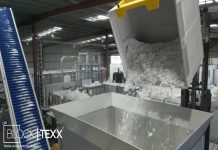
A UNSW professor has highlighted the importance of establishing a circular economy as today’s fashion brands produce almost twice the volume of clothes as before the year 2000.
UNSW Associate Professor of Design Alison Gwilt said brands and manufacturers need to work towards a circular economy that eliminates waste, keeps products in use, and regenerates natural systems.
According to UNSW, the fashion industry’s long supply chain— starting with agriculture and petrochemical production to manufacturing, logistics, and retail— equates to substantial water, material, and chemical and energy use.
A study from Monash University revealed that Australia ranks as the second largest consumer of textiles in the world behind the United States, with purchases more than double the global average. More than 90 per cent of the materials are thrown out within 12 months, which is equivalent to 6,000 kg of clothing and textiles dumped in landfill every 10 minutes.
Having a circular economy in place promotes the transition to renewable energy and materials, rather than the current model that produces and consumes finite resources, UNSW said in an article.
“The circular economy functions through two cycles: a technical cycle that keeps products and materials in circulation through reuse, repair, remanufacture or recycling, and a biological cycle that returns biodegradable materials to the earth to regenerate nature,” Gwilt said.
However, Gwilt noted that while designing specifically for the circular economy seems the obvious answer, brands associated with low price points could face challenges.
“Customers expect to buy items at a certain price, and this can promote the use of cheaper synthetic fabrics that don’t biodegrade. Even those items made from natural fibres need careful consideration during production to ensure they meet the requirements in a biological cycle.”
Aside from the establishment of a circular economy, A/Prof. Gwilt said new innovative fabrics designed to replace resource-intensive natural fibres and petroleum-based man-made fibres could deliver more sustainable production.
New fibres and materials have emerged from easy-to-grow crops, such as hemp and waste by-products from crops such as pineapple, citrus fruits, milk, mushroom, and kelp extracted from seaweed.
A/Prof. Gwilt said she is consulting on the creation of a technical specification for compostable textiles for Standards Australia, the first of its kind globally.
“Composting textiles doesn’t require major technology breakthroughs or enormous investment or infrastructure, so it would constitute a relatively easy win for both clothing users and the environment,” Gwilt said.




















